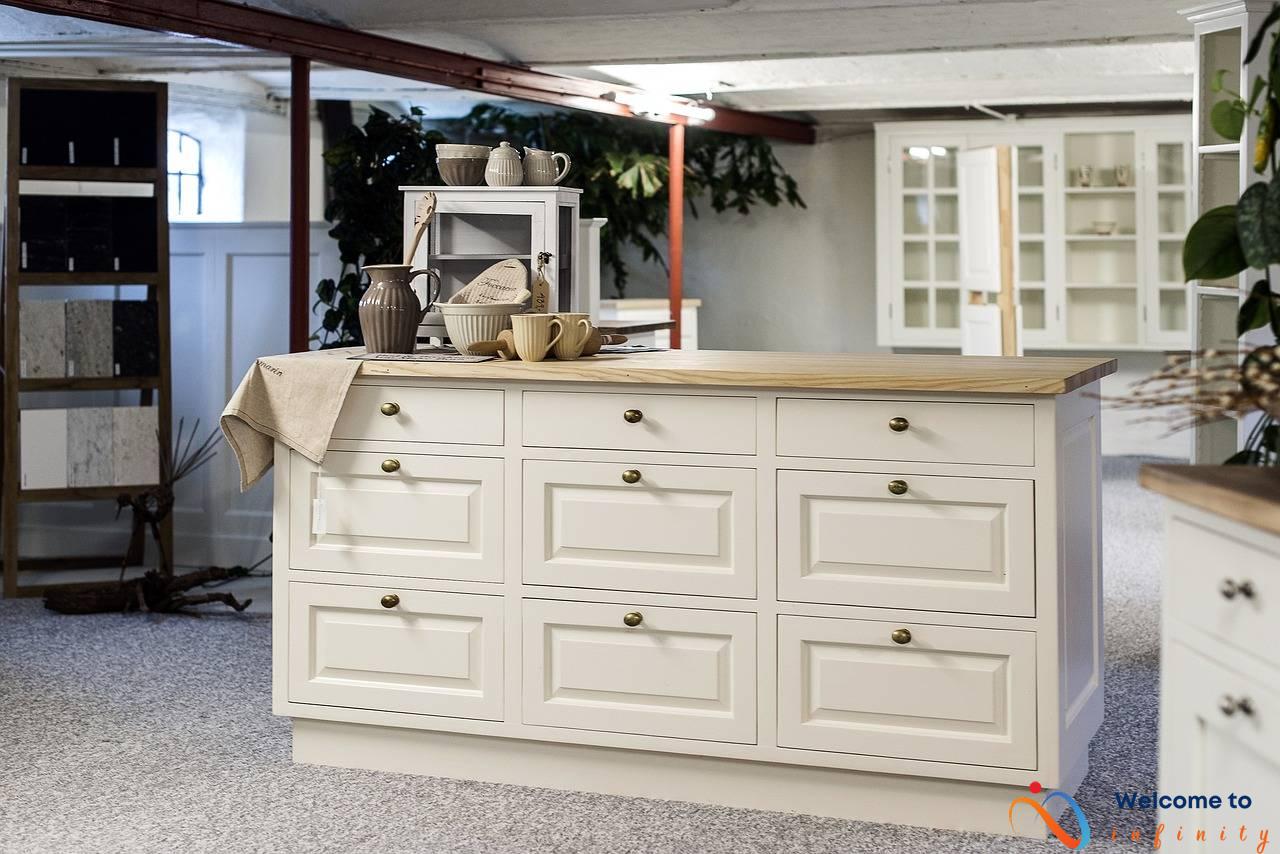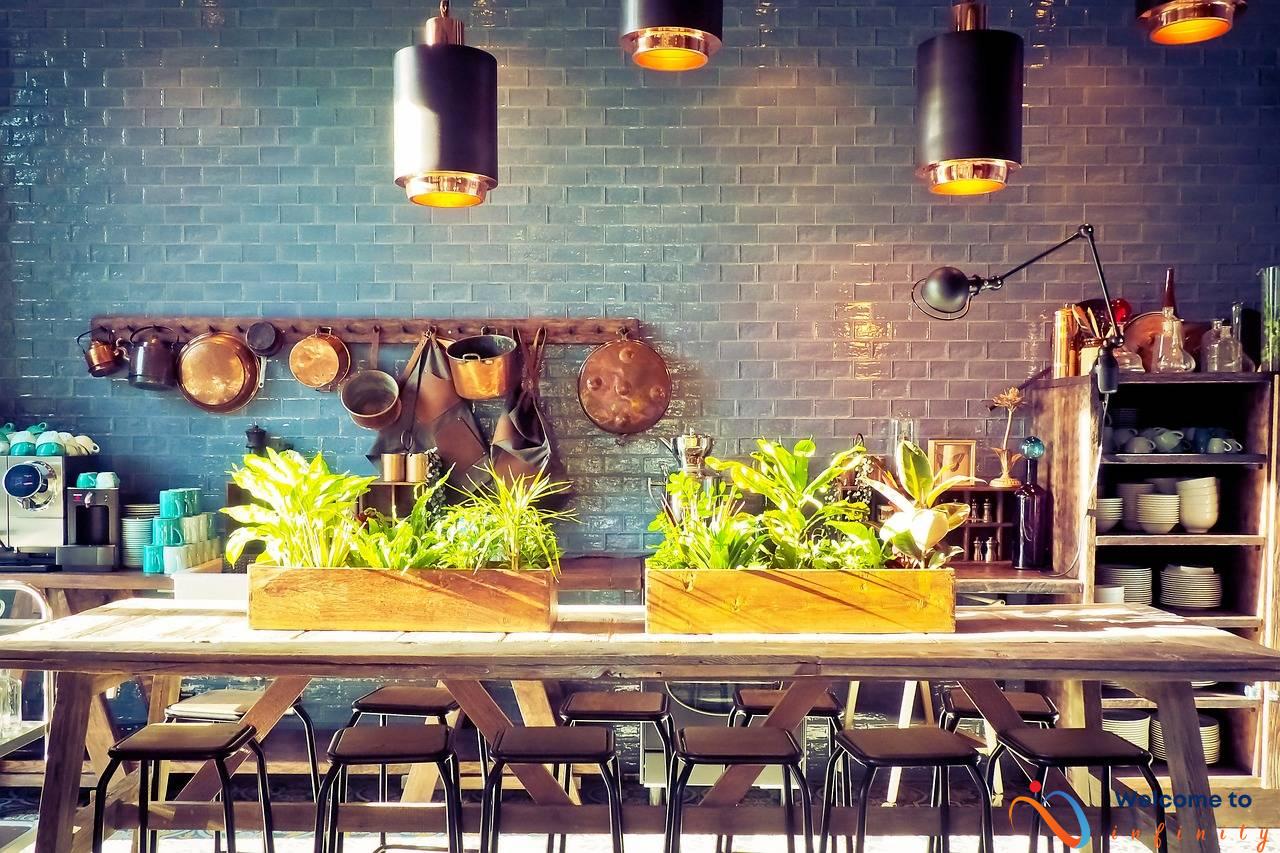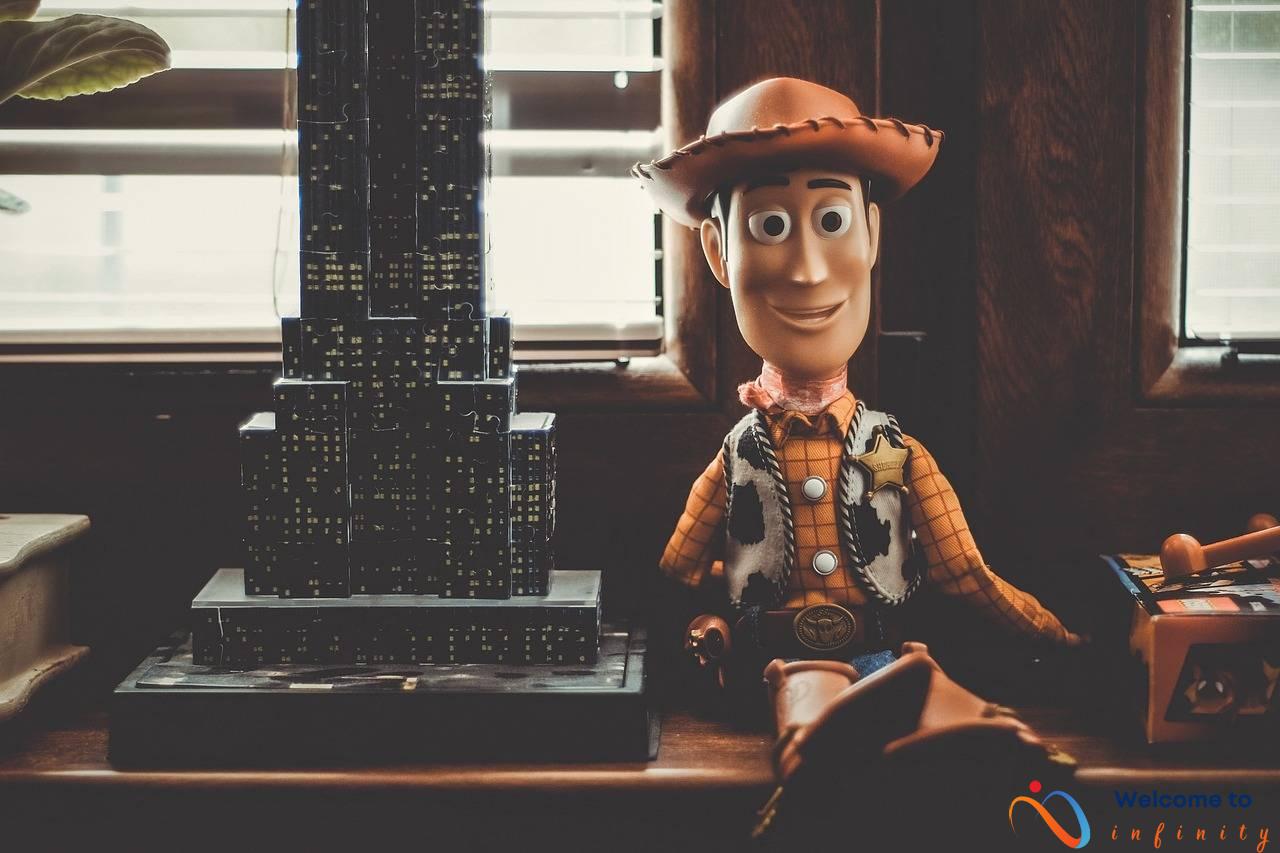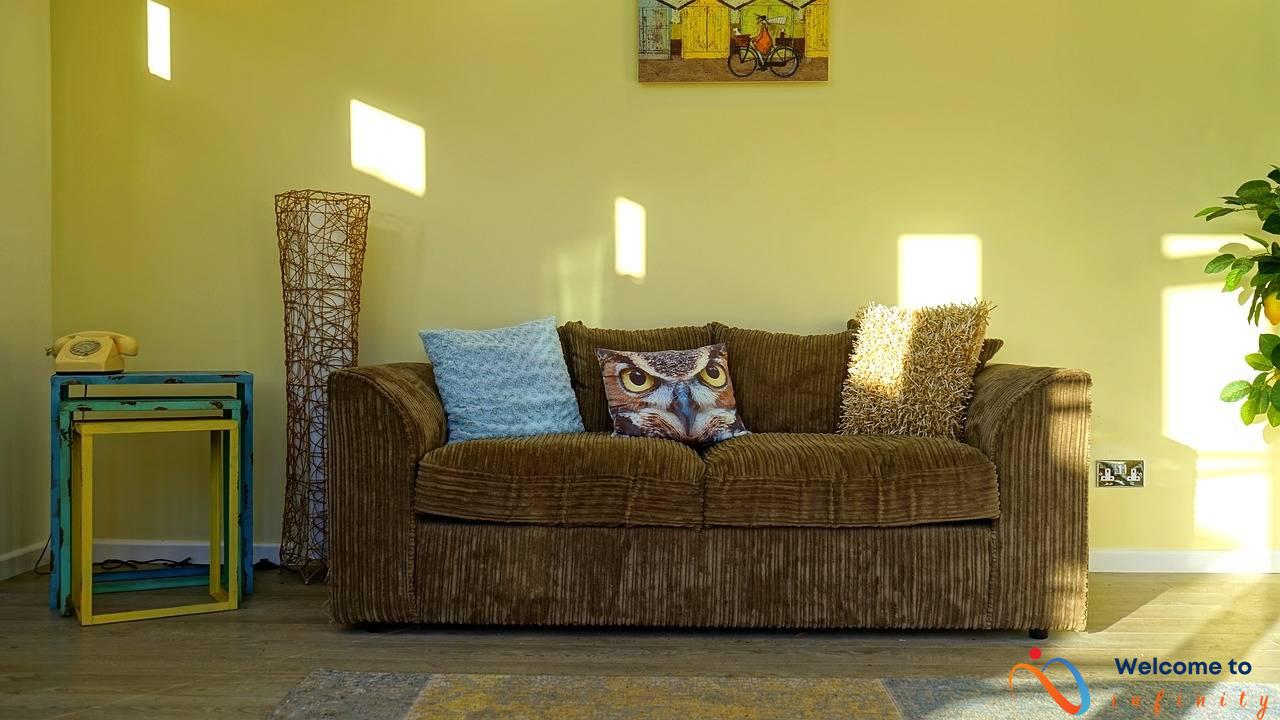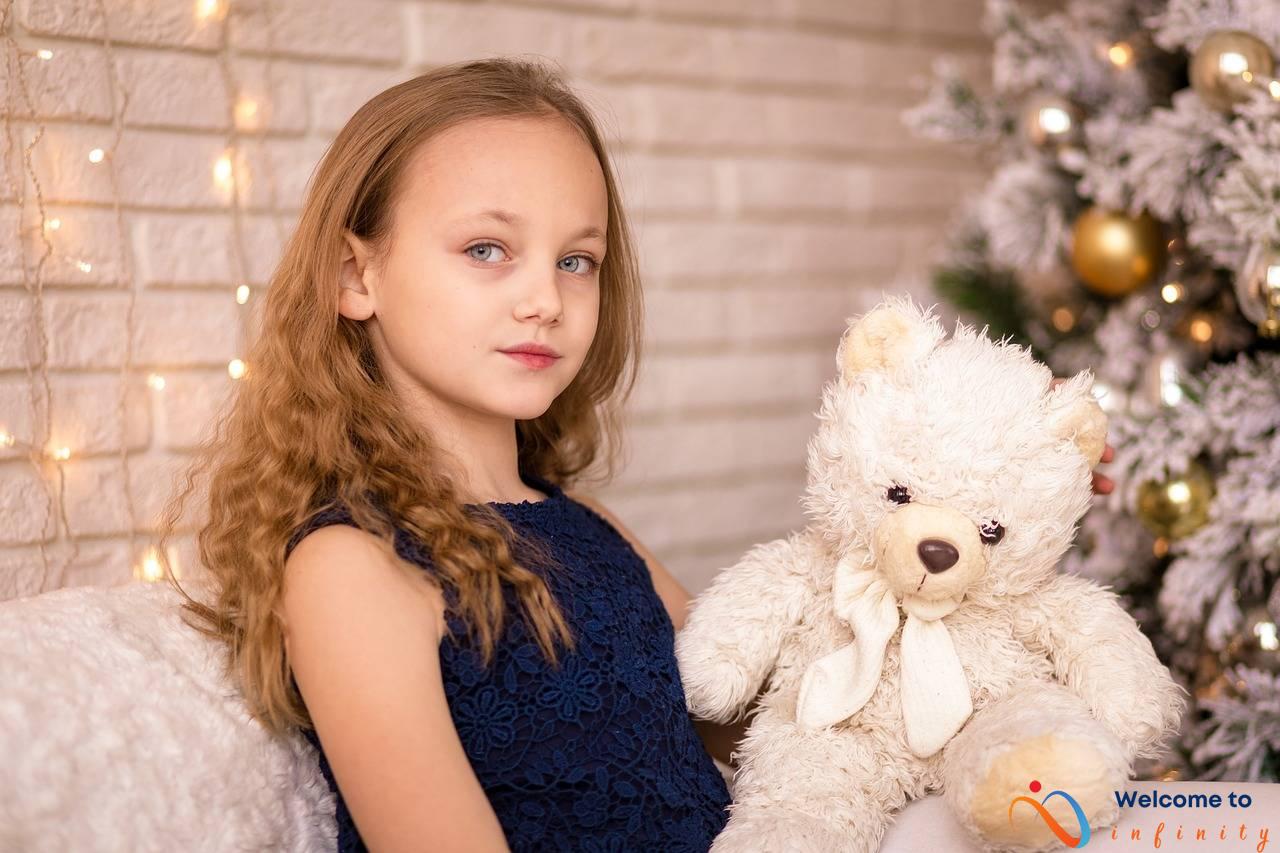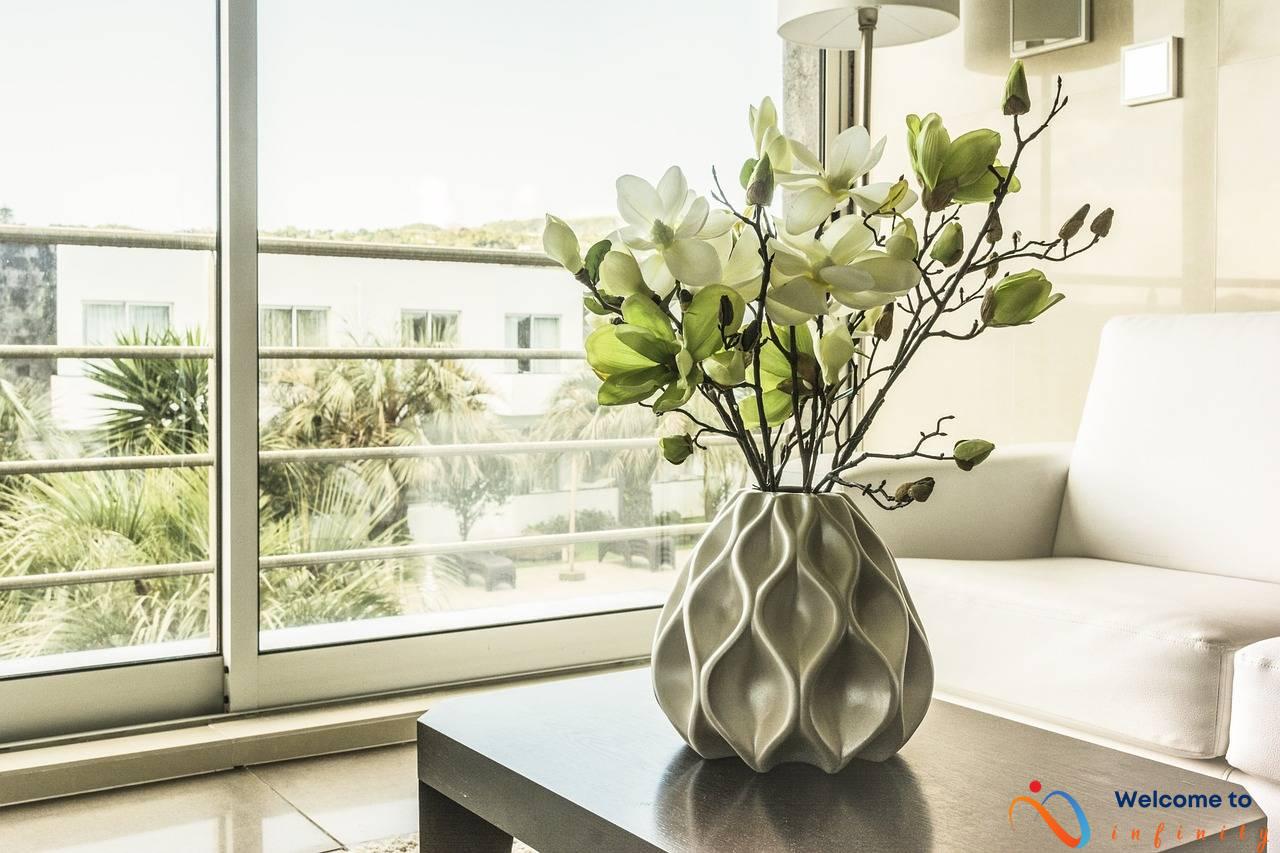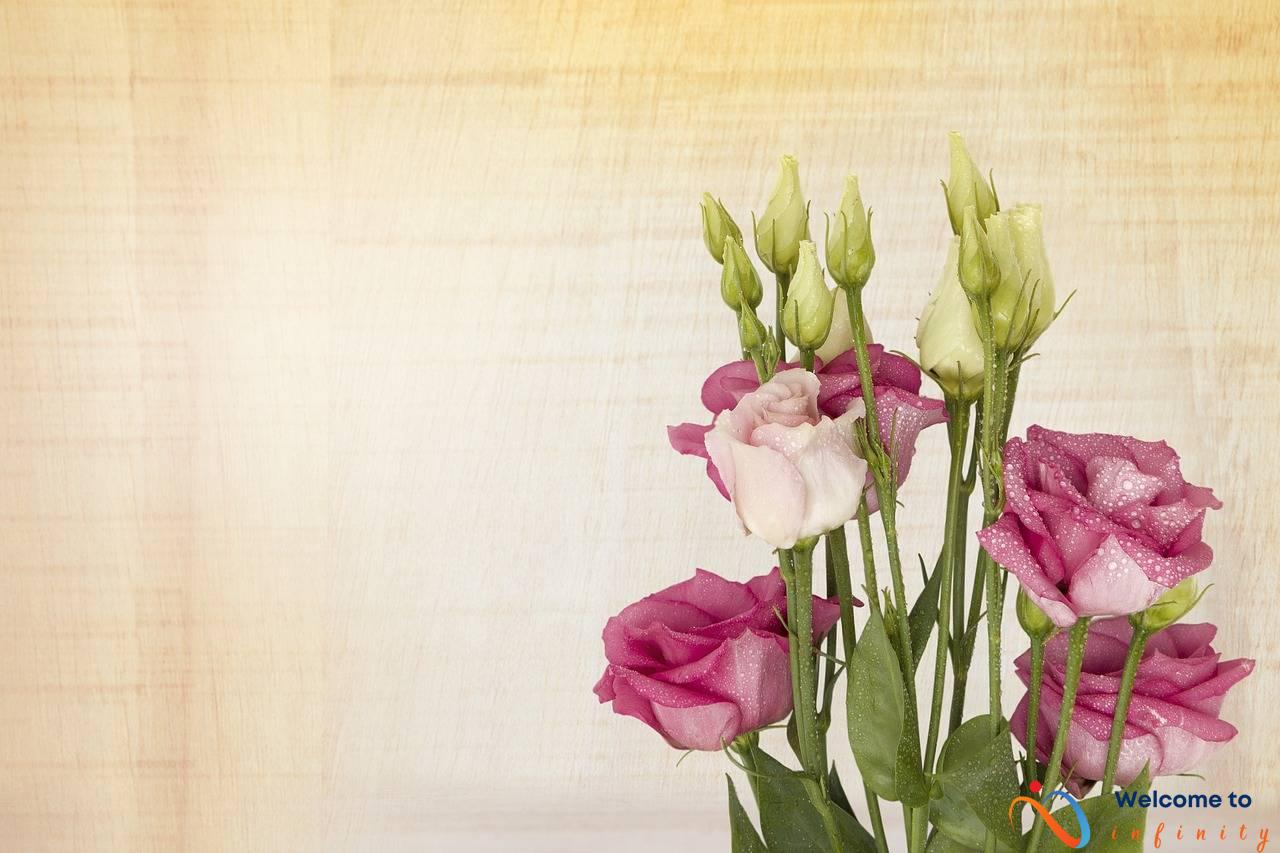Pet owners often face the challenge of creating a home that is both functional and stylish for their furry companions. With minimalist design, it is possible to achieve this balance while creating a pet-friendly environment.
The key to minimalist design for pet-friendly homes is to eliminate unnecessary clutter. This allows for ample space for pets to move around freely without knocking over decorations or damaging furniture. By reducing the amount of decorative items, homes become more inviting for pets and create a space where they feel comfortable and safe.
When selecting materials for a minimalist design, it is important to consider durability and pet-friendliness. Flooring is an essential element and should be safe and easy to clean. Hardwood floors, while aesthetically pleasing, can be easily scratched and damaged by pets. Opting for tile flooring in high-traffic areas can be a better option for pet owners.
- While hardwood floors look beautiful, they are easily scratched and damaged by pets.
- Tile flooring is a better option for pet owners because it is safe and easy to clean in high-traffic areas.
When it comes to fabric choices, pet hair-resistant materials should be considered. Leather is a durable and suitable option, and microfiber fabrics offer convenient and durable solutions for pet owners.
- Leather is a durable and pet-friendly material that is easy to clean and resists pet hair.
- Microfiber fabrics are also a convenient and durable option for pet owners while also being pet hair resistant.
Creating cozy spaces for pets to relax in is also important in a minimalist design. Incorporating pet nooks and hiding essential pet items in plain sight can add to the functionality and style of the home. Multi-functional spaces, such as built-in crates and hidden litter boxes, can also be incorporated into minimalist designs without sacrificing style.
Gardening also plays a role in creating a pet-friendly home. Choosing the right plants and creating proper fences and barriers can provide pets with a safe and enjoyable outdoor space.
- Choosing the right plants is key to creating a safe outdoor space for pets.
- Proper fencing and barriers also play a crucial role in creating a safe outdoor space for pets.
Minimalist design for pet-friendly homes is all about creating a functional and stylish space for pets and their owners. By eliminating clutter, choosing durable and pet-friendly materials, creating cozy spaces, and incorporating multi-functional designs, pets can enjoy their homes in comfort and style.
Forget the Frills
When it comes to designing a pet-friendly home, it's important to remember the function of the space. Forget about frilly decorations and focus on creating a clutter-free environment that serves both pets and their owners. Eliminating unnecessary clutter not only gives pets more space to play, but it also makes it easier for owners to find and store pet supplies.
To make the most of limited space, consider using multi-functional furniture and storage solutions that serve both humans and pets. For example, an ottoman with hidden storage can serve as a place for humans to rest their feet and a spot for pets to hideaway toys or blankets. Another option is to create a designated pet space, such as a nook or corner, for all pet-related items to be stored away from the rest of the living space.
In addition to simplifying the space, reducing clutter can also make cleaning easier. With fewer things to dust, vacuum, or wash, owners can spend less time cleaning and more time enjoying their pets. Simplifying the space can help create an environment that is both functional and aesthetically pleasing for pets and their owners.
Materials Matter
When it comes to designing a pet-friendly home, materials matter. It is important to choose materials that are not only durable and long-lasting but also meet the aesthetic needs of the homeowner. When selecting materials for the home, always keep the pets in mind.
Flooring is one of the primary considerations for pet owners. The flooring material needs to be easy to clean, scratch-resistant, and slip-resistant. Hardwood flooring is a popular choice, but it may not be ideal for households with pets due to its susceptible nature to scratches and stains. In contrast, tiles are an excellent choice for pet owners. They are durable, easy to clean, and can withstand pet traffic.
While hardwood floors are aesthetically pleasing, they may not be the best option for pet owners. Hardwood floors show scratches, stains, and damages caused by pets. Certain hardwood species, such as Brazilian cherry and hickory, are harder and less likely to scratch, making them a better option for pet owners.
Tile floors are a perfect fit for pet parents who want low-maintenance and durable flooring. They are non-absorbent, easy to clean, and can withstand pet traffic. Additionally, tiles are available in a vast range of patterns, designs, and hues, allowing homeowners to create a unique and stylish flooring option.
Another essential consideration for pet owners is the fabric choices used in upholstery and drapes. It is essential to choose fabrics that are resistant to pet fur and stains.
Leather is an excellent option for pet owners as it is durable and resistant to pet fur and scratches. It is easy to clean and is available in a wide range of colors and textures, making it a versatile option for homeowners.
Microfiber fabrics are becoming increasingly popular among pet owners due to their durability and resistance to stains and pet fur. They are easy to clean, and their soft texture makes them comfortable for pets to snuggle on.
Choosing the right materials for a pet-friendly home is essential to enhance both the aesthetic and function of the household. Always keep the needs of the pets in mind to ensure a happy and safe environment for them.
Flooring
Pets can be tough on flooring, so it's important to choose materials that are both durable and easy to clean. Hardwood flooring is a popular choice for many pet owners, but it's important to consider the potential damage from scratches and accidents. Tile flooring is a great alternative as it is both pet-friendly and easy to clean. Additionally, vinyl and laminate flooring can also be great choices for pet owners due to their resistance to scratches and spills.
Another important factor to consider when selecting flooring for your pet-friendly home is safety. It's important to choose materials that don't have any harmful chemicals or adhesives that could be hazardous to your pet's health. Rubber flooring and cork flooring are two options that are not only safe but also offer good traction to prevent slips and falls.
Overall, selecting the right flooring for your pet-friendly home should balance both style and function. It's important to consider your pet's needs as well as your own personal preferences. With careful consideration and research, you can find the perfect flooring that will meet the needs of both you and your furry friend.
Hardwood
Hardwood floors are a popular flooring choice for their classic, elegant appearance. However, when it comes to pets, hardwood floors can have some drawbacks.
- Pros: Hardwood floors are durable and long-lasting, making them a great investment for pet owners. They are also easy to clean and maintain, with daily sweeping and periodic polishing. Hardwood floors can also increase the resale value of your home.
- Cons: Scratches and dents can easily accumulate on hardwood floors, especially if you have large dogs or active pets. Urine and water spills can also cause damage if not cleaned up promptly, leading to warping and discoloration.
To minimize damage, consider using throw rugs or runners in high-traffic pet areas and trimming your pet's nails regularly. If you still want the beauty of hardwood floors but are concerned about pet damage, consider engineered hardwood floors which have a protective layer to help prevent scratches and water damage.
Tile
Tile flooring is an excellent choice for pet owners who want to create pet-friendly spaces. Tiles are durable, scratch-resistant, and easy to clean, making them perfect for high-traffic areas like pet playrooms, mudrooms, and kitchens. Here are some benefits of using tile flooring in pet-strong areas:
- Scratch-resistant: Unlike hardwood floors, tiles are scratch-resistant, so pet owners don't have to worry about scratches from their pet's claws.
- Easy to clean: Pet owners know the importance of frequent cleaning. With tile flooring, cleaning is a breeze. Just sweep or mop to keep it clean and tidy.
- Durable: Tiles are known for their durability, which is a plus for pet owners who want to avoid costly flooring replacements due to pet damage. With proper care, tiles can last a lifetime.
- Pet-friendly: Many tile flooring options are designed with pets in mind. Some tiles have a slip-resistant surface that prevents pets from slipping, while others have a textured surface that provides traction for their paws.
When choosing tile flooring for pet areas, it's essential to consider the type of tile. Porcelain and ceramic tiles are both excellent options for pet areas as they are scratch and water-resistant. It is essential to choose non-toxic tiles because pets often lick or chew on their paws, and any harmful substances in the tiles may cause health issues for them.
In conclusion, tile flooring is the ideal choice for pet owners who wish to create a pet-friendly home. Its durability, easy maintenance, and scratch-resistant make it the perfect option for pet-strong areas. Plus, its pet-friendly features ensure that our furry friends can enjoy our home as much as we do without compromising on style or function.
Fabric choices
When it comes to choosing fabrics for a pet-friendly home, it's important to select materials that are durable and easy to maintain. Pet hair and scratches can wreak havoc on furniture, so it's crucial to opt for pet hair-resistant fabrics and materials. Here are a few options to consider:
Leather: Leather is a popular choice for pet owners because it is easy to clean and can withstand scratches. It also looks great and can add a sophisticated touch to your home. However, keep in mind that leather can be prone to staining and may not be the best option for heavy droolers or pets prone to accidents.
Microfiber: Microfiber is a synthetic material that is similar to suede. It is durable, easy to clean, and resistant to stains. It's also a great option for those who suffer from allergies, as it is less likely to attract dust mites.
Outdoor fabrics: Outdoor fabrics are another great option for pet-friendly homes. They are typically made from materials like acrylic or polyester, which resist stains and are easy to clean. They're perfect for outdoor furniture or indoor pieces that are likely to get a lot of wear and tear.
Crypton: Crypton is a specially designed fabric that is resistant to stains, odors, and bacteria. It's a popular choice for pet beds and furniture, as it is built to withstand pet messes and spills.
When selecting fabrics for your home, be sure to consider factors like durability, ease of maintenance, and pet-friendliness. Keep in mind that some materials may be more prone to damage than others, so it's essential to choose wisely. With the right fabrics and materials, you can create a beautiful, functional, and comfortable home that both you and your pets will love.
Leather
When it comes to pet-friendly materials, leather is a great choice for pet owners. Not only is leather durable and easy to clean, but it also adds a touch of sophistication to any room.
Leather is resistant to scratches and stains, making it ideal for households with pets who love to play and explore. In addition, unlike fabric materials, leather doesn't trap pet hair and odors, making it easier to maintain a clean and healthy home.
Another benefit of leather is that it's hypoallergenic, making it an excellent choice for pet owners with allergies. Leather doesn't hold onto allergens like dust and pet dander, making it a more comfortable option for those with sensitivities.
In terms of style, leather can add a timeless and elegant look to any room. Whether it's a leather sofa, chair, or ottoman, it creates a sleek and sophisticated feel that can elevate any decor.
For pet owners looking for a durable, low-maintenance, and stylish furniture option, leather is definitely a suitable choice.
Microfiber
Microfiber is a popular choice of material for pet-friendly homes due to its convenience and durability. This synthetic material is not only easy to clean but also resistant to pet hair and stains. Additionally, microfiber is budget-friendly and comes in a variety of colors, making it easy to incorporate into any design scheme.
One of the biggest advantages of microfiber is its durability. This material is designed to withstand high levels of wear and tear, making it an ideal choice for homes with pets. It is also stain-resistant, which means that spills and accidents can be easily cleaned with a damp cloth and mild cleaning solution. This makes it an excellent choice for pet owners who want to keep their homes looking clean and fresh.
Another advantage of microfiber is its convenience. This material is easy to clean and maintain, which makes it a popular choice for busy households. With just a quick wipe down, pet hair and dirt can be easily removed from microfiber furniture. Additionally, microfiber is lightweight and easy to move, making it a great choice for homes with multiple pets or for those who frequently rearrange their furniture.
When choosing microfiber furniture, it is important to consider the quality of the material. Higher quality microfiber is more resistant to wear and tear and is less likely to pill or fade over time. It is also important to choose a color that is easy to clean and maintain. Neutral colors, like beige or grey, are often a good choice for pet owners as they are less likely to show stains or dirt.
Overall, microfiber is a convenient and durable choice of material for pet-friendly homes. Whether you are looking for furniture or upholstery, microfiber is a versatile and functional choice that will serve both you and your furry friends for years to come.
Creating a Cozy Space
Creating a cozy space in your home for your pets is a must, especially if you want them to feel comfortable and at home. One of the simplest ways to achieve this is by designating a specific area for your pets to call their own. You can do this by setting up a comfortable bed, toys, and blankets in a corner of your living room or bedroom. This will give your pets a sense of belonging, and they will feel more secure knowing they have a designated space to relax in.
If you have a spare room in your home, you can transform it into a playroom for your pets. This is an excellent way to keep them entertained, especially if they have a lot of energy. You can add a scratching post, toys, and climbing structures to keep them engaged. Additionally, you can install a pet door to allow them easy access in and out of the room.
If you are short on space, you can still create a cozy space for your pets by incorporating cozy nooks into your existing living space. For instance, you can install a window seat for your cats or create a secluded corner for your dogs to unwind in. Adding pillows, blankets, and toys will make the space inviting and entertaining for your pets.
Incorporating indoor plants into your pet's space can also make it cozy and inviting. Plants like spider plants and ferns are safe for pets and will add a splash of color to their area. As you design your pet's space, it's essential to prioritize their safety and comfort. A comfortable and inviting space will not only make your pets feel happy, but it will also make spending time with them more enjoyable for you.
Pet Nooks
If you're looking to create a comfortable home for your pet, consider designing a cozy pet nook in your living space. Pet nooks can be functional, stylish, and provide a sense of comfort for your furry friend. Here are some ideas to inspire your pet nook design.
Firstly, consider incorporating your pet's bed into a furniture piece. Utilize a corner in the room to build a custom-shaped bed to fit your pet's size, or turn an unused shelf or drawer into a cozy bed nook. You can also add cushions and blankets to make it even more comfortable and inviting.
Another idea is to incorporate a built-in home for your pet's toys and treats. Consider building a small cabinet or shelf to house your pet's toys, treats, and grooming products. This way, everything is organized and within reach when you need it.
If your pet enjoys looking out the window, create a cozy window seat for them to lounge. An easy way to do this is to add a cushioned mat to an existing windowsill or set up a bench with a view. This is a great way to create a relaxing environment for your pet while adding extra seating space for you and your guests.
Lastly, consider creating a pet area within your cabinets. A pull-out drawer or cabinet can be transformed into a feeding station and storage area for your pet's food and bowls. This design not only keeps your pet's feeding area separate but also frees up space in your kitchen.
Designing a pet nook that is both functional and stylish can enhance your pet's quality of life while adding a unique touch to your living space. Explore these inspired ideas to create an inviting nook for your furry best friend.
Hiding the Essentials
When designing a home for pets, it's important to consider not only their comfort but the functionality of space. One challenge pet owners face is how to store and hide pet essentials, such as food and water bowls, toys, and litter boxes.
A popular trend in minimalist pet-friendly design is incorporating pet essentials into furniture, such as coffee tables with built-in bowls or ottomans with hidden storage compartments for toys and treats. Additionally, pet essentials can be hidden in plain sight by matching them to the surrounding decor and using creative storage solutions.
One example of this is using a decorative crate to house a litter box and incorporating it into a room's design. This not only hides the unsightly litter box but also adds a decorative touch to the space. Another solution is to use a storage bench or cabinet to store pet toys and essentials, with the added bonus of providing additional seating or storage space.
When it comes to food and water bowls, they can easily be disguised as part of a vignette on a shelf or mantel, with decorative covers or stands to blend in with the surrounding decor. Alternatively, custom built-in feeding stations can be incorporated into kitchen or mudroom cabinetry to keep bowls out of the way and create a designated feeding area.
With a little creativity and attention to detail, pet essentials can seamlessly blend into a home's design while still being easily accessible for pets and their owners.
Multi-functional Design
Multi-functional design is key when creating a home that is both pet-friendly and practical for owners. One way to incorporate pet needs into multi-functional spaces is by tucking away built-in crates into living areas. These crates can be disguised as furniture pieces, such as end tables or ottomans, and provide a cozy spot for pets to rest while keeping them out of the way.
Another way to incorporate pet needs into multi-functional spaces is by incorporating hidden litter boxes into living areas. These litter boxes can also be disguised as furniture pieces or concealed in cabinets, keeping them out of sight while maintaining the aesthetic of the room. It's important to choose a well-ventilated area for placement and to clean the box regularly.
In addition, pet gates can also be used to block off areas of the home that are not pet-friendly, such as stairs or rooms with delicate décor. This allows pets to roam freely without causing damage while giving owners peace of mind.
When considering multi-functional design for pet-friendly homes, it's important to keep in mind the needs of both pets and owners. By incorporating these elements, homes can be both stylish and functional for all members of the family.
Built-in crates
Built-in pet crates are an ideal option for pet owners who want to incorporate functional pet spaces into their home design. By integrating pet crates into living spaces, pet owners can save space and create a more seamless home design. Built-in crates work particularly well in homes with limited square footage or in multi-functional rooms like a home office or living room.
When choosing a built-in crate for your home, consider the size and style of your pet. You want to ensure that the crate is large enough for your pet to move around comfortably and that the design complements the rest of the room. Popular built-in crate designs include those that blend in with furniture or that have a modern, minimalist design.
Another important consideration is placement. Built-in crates should be located in quiet areas of the home that are not exposed to loud noises or distractions, ensuring your pet can enjoy a peaceful retreat. Additionally, built-in crates can be designed to fit snuggly into nooks or under staircases, maximizing space in the home.
For those who prefer a DIY approach, building your own built-in pet crate can be a fun and rewarding project. There are many tutorials available online, and with the right tools and materials, you can create a custom crate that perfectly fits your home's design and your pet's needs.
- To sum up,
- Built-in pet crates blend seamlessly into home design, saving space and creating a functional pet area.
- Consider pet size and style when choosing a built-in crate, and ensure it is located in a quiet area of the home.
- Building a DIY built-in pet crate is a fun project that can result in a custom design that perfectly fits your home.
Hidden Litter Boxes
If you're a cat owner, you know the struggle of incorporating litter boxes into your home's design. While they're a necessary part of your cat's life, they're not the most aesthetically pleasing addition to any room. However, with some creativity and design savvy, you can easily incorporate litter boxes into your home without sacrificing style.
One idea is to create a hidden litter box disguised as a piece of furniture. For example, you could convert an old dresser or cabinet into a stylish litter box enclosure. Simply cut a hole in the side for your cat to access, and voila! You have a functional and stylish piece of furniture.
Another option is to utilize a decorative screen to hide your litter box. This way, your cat can still access it easily, but it's not an eyesore in your living space. You could also hang curtains to conceal a litter box area, or even create a litter box nook with a curtain or door for privacy.
Keep in mind that it's important to choose a litter box that fits with your decor, whether it's a sleek and modern design or a more traditional style. Also, be sure to place litter boxes in a discreet location for your cat's comfort and privacy.
By incorporating hidden litter boxes into your home's design, you can keep your cat's needs a top priority without sacrificing style. It's a win-win for both you and your furry friend!
Gardening for Pets
Gardening is a fun and relaxing activity for pet owners, but it can also be dangerous for pets if proper precautions are not taken. When designing outdoor spaces for pets, it's important to choose plants that are safe for them. Some plants can be toxic to pets, so it's important to research and avoid plants that are harmful to them. Additionally, it's important to create a safe outdoor space for pets with the proper fencing and barriers. This will ensure that they don't wander off and get hurt.
One option for designing a pet-friendly garden is to create a designated area for pets to play and explore. This area can be lined with pet-safe plants, such as catnip or wheatgrass, and include toys and other activities for them to enjoy. A pet-friendly garden can also include a space for pets to relax, such as a comfortable bench or a shaded area with a dog bed.
When choosing plants for a pet-friendly garden, it's important to also consider how they affect the local environment. Plants that attract bees and butterflies can be beneficial for the environment, but they can also pose a danger to pets that may get stung if they play too close to the bees. It's important to weigh the benefits and drawbacks of each plant before deciding to include it in the garden.
Lastly, pet owners should also be mindful of the hardscaping materials used in their garden design. Avoid using materials that can become too hot in the sun or that may be slippery when wet, as this can pose a danger to pets. Additionally, make sure that the garden is free of any sharp or hazardous objects that can harm pets.
With a little planning and consideration, it's possible to create a beautiful and pet-friendly garden that pets will love to play and relax in. By choosing the right plants and materials and creating a safe environment, you can ensure that your garden is a fun and enjoyable space for both you and your pets.
Plant Choices
When designing an outdoor space for pets, it's important to choose plants that are not harmful to your furry friends. Opting for non-toxic plants can help ensure the safety of your pets while still adding beauty and aesthetic value to your garden. Some examples of pet-friendly plants include:
- Marigolds
- Sunflowers
- Petunias
- Zinnias
- Bamboo
- Ferns
Another important factor to consider when choosing plants is to avoid ones with thorns or spikes as they can injure your pets. For example, roses and cacti are not suitable choices for a pet-friendly garden.
It's also recommended to avoid using chemical fertilizers and pesticides in your garden. Instead, opt for organic options to ensure the safety of your pets and the environment.
By being mindful of the plants you choose, you can create a beautiful and safe outdoor space for both you and your furry friends to enjoy.
Fences and Barriers
One of the most crucial aspects of creating a pet-friendly outdoor space is ensuring that pets are safe from harm. This is where proper fencing and barriers come into play. Not only do they keep pets within the designated area, but they also protect them from the dangers that may be lurking outside.
When designing the perfect outdoor space for your furry companion, it's important to analyze the type of fence or barrier that is best suited for your needs. Small dogs, for example, may require fencing with smaller gaps to prevent them from escaping, while larger dogs may need higher fences to ensure they stay contained.
There are numerous fencing options available, including wood, vinyl, chain link mesh, and wire. Before making a decision, take into account the durability, safety, and aesthetic appeal of each option. When in doubt, consult with a professional to ensure that you are making the best choice for your pet's safety and your outdoor living space.
Another important aspect is the placement of the fence or barrier. Consider factors such as the proximity to roads and neighbors, as well as the overall size and layout of the space. Maintaining a clear line of sight can significantly reduce potential hazards and ensure your pet's safety.
In addition to fencing, barriers can also be used to create a secure environment for pets. For example, creating a designated play area for pets by adding mesh barriers will provide a safe space for them to play while keeping them close by. Additionally, barriers can be used to block off areas that may be dangerous or harmful to pets.
In conclusion, properly designed fencing and barriers can create a safe and enjoyable outdoor environment for both pets and their owners. Take the time to analyze the best options available and consult with professionals to ensure that you're making the best choice for your pets and your overall outdoor space. With the right fencing and barriers in place, you can create a secure and happy space for your furry friends to enjoy all year round.





